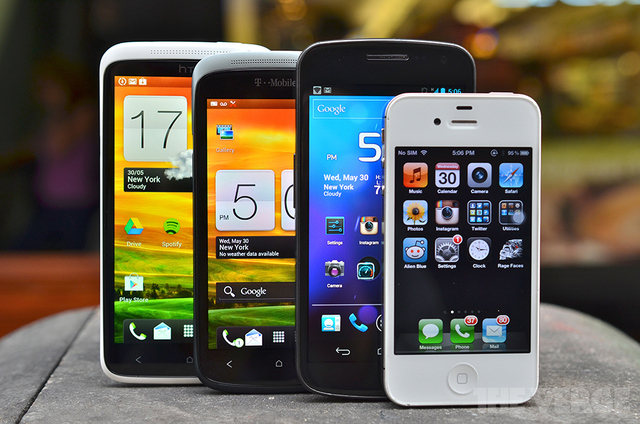According to data from the Internet World Stats, referring to 2012, Spain ranks 18th worldwide in users and 7th in Europe, with a penetration of 67.2%, four points higher than the European Union, which is in 63.2% and well above the world average, which stands at 34.3%.
In smartphone penetration we still go further, having the highest in Europe, with 63.2%, above England, Germany, France and Italy.
Information channel
If we stick to the strict sense of who makes an online purchase, the digital buyer rate drops to 50.7%, but this is a biased trait because, as Marc Cortés, professor in the Marketing area at Esade points out, “it does not take into account to the people who use the new technologies to obtain information, to obtain advice and to compare, that is to say, to make the purchase decision ”. And in this regard, we equate ourselves to the most advanced countries in the matter, with a percentage that exceeds 80% among online buyers and 60% among offline buyers.
We still have to go further and thus, according to the Study on B2C electronic commerce 2012, of the ONTSI (last published), for the 82.6% of consumers, the Internet is the most used source of information and in the 60.8% the one that has the most impact on the buying process. Any entrepreneur who does not take this reality into account is doomed to drown in a sea of obsolescence.
It is true that this degree of penetration is not yet translated into the corresponding business figures (in fact, we are very far from Italy, France or the United Kingdom, which generate 2, 4 and 7 times more business than us, respectively), But what the vast majority of Spanish consumers are unaware of is that, as stated in the latest report on Electronic Commerce in Spain through means of payment, published by the CMT, corresponding to the third quarter of 2012, no less than 41.8% of the business that originates in our country through e-commerce goes beyond our borders. Here the problem is not one of demand but of supply.
Two antagonistic phenomena
For Pinedo, it can already be said that "we are analog and digital at the same time", a situation that leads to two antagonistic phenomena typical of our country:
The ROPO (Research Online Purchase Offline). The Spanish consumer searches the Internet and buys in the store. That is, the decisions are made on the Internet, but the purchase is made physically, especially in some categories.
The O2O (Offline to Online). This would be the antithesis of the previous one, but which is beginning to grow in categories such as small appliances and fashion. The Spanish consumer likes to approach the establishment, physically see the product, consult with the seller, but then go home and compare the offers on the computer.
Regarding technologies, users can be divided into three:
- Digital natives or those under 35 years of age, who "have internalized the consumption and use of new technologies, because they have grown up with the Internet," explains Sergio Bernués, Marketing Director of SMEs.
- The adapted ones. Between 35 and 55 years: they use the computer a lot to learn and compare. They buy more and more, but they still see some disadvantages. They are half digital, half analog.
- The reticent. More than 55 years: they are the least digital, although online consumption is extending up to 70 years.
How is their behavior
To explain this section, it is necessary to answer this question, what influences the digital consumer? Several are the phenomena to take into account:
The searchers. “Google, understood as a general search engine, has had a significant influence on the hierarchy of purchasing decisions. Before the consumer thought about the brand and now about its need. In other words, you type in your need and the search engine becomes the arbiter of your purchase decision, ”says Pinedo. In fact, 74.3% of consumers access information through general search engines.
Social networks. When making decisions, we are greatly influenced by the opinion of an unknown person who enters a comment in a restaurant or hotel. In addition, Spain is one of the countries where social networks are used the most and we are one of the few that have a local network, Tuenti, which overshadows Facebook.
The mobile. It has become an element of geolocation of what you are going to buy. Many decisions are made at times, such as on the bus. And through the mobile we receive a message from a nearby establishment, which in the end leads us to local decisions. It is consumption on the road. And the applications that allow making comparisons in establishments are growing.
The tablet. It has entered strongly in the last three years and is having a fundamental impact on the purchasing habits of Spanish consumers. It is the purchase from the sofa and often in combination the television. As Juan Carlos Alcaide, Director of Services Marketing, recalls, “the 62% of viewers surfs on social forums while watching television. It is the coexistence of the two screens ”.
Fountain:
entrepreneurs.es
Isabel garcia mendez














No Comment